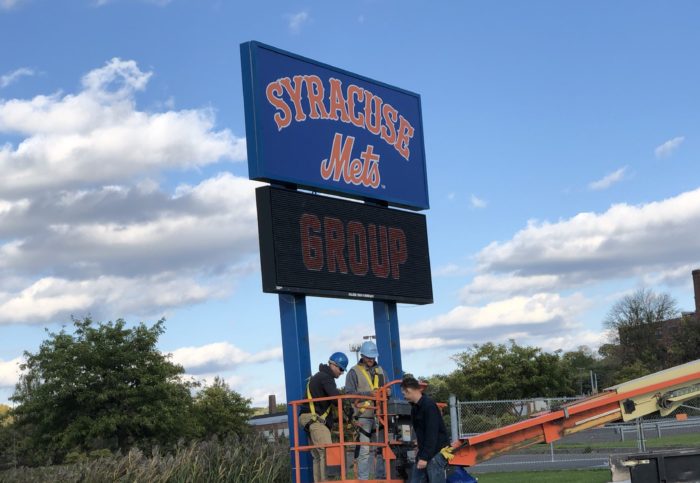
James Farrance/MMN
Major League Baseball announced on Thursday that they will be experimenting with four new playing rules throughout the minor leagues during the 2021 season.
Here’s what will be different at various MiLB levels for the upcoming season:
Larger Bases in Triple-A
To reduce player injuries and collisions, the size of first, second, and third base will be increased from a 15-inch square to an 18-inch square. The shorter distances between bases created by increased size might have a modest impact on the success rate of stolen base attempts and how often players reach base on ground balls and bunts.
Defensive Positioning in Double-A
On defense, teams must have at least four players on the infield with each having both feet completely in front of the outer boundary of the infield dirt. Depending on how this goes, MLB may require two infielders to be entirely on each side of second base in the second half of the season. The hope here is that these changes will increase the batting average on balls in play.
“Step Off” Rule in High-A
Pitchers are required to disengage the rubber prior to throwing to any base, with the penalty of a balk in the event a pitcher fails to do so. When this rule was used during the second half of the 2019 Atlantic League season, there was a noticeable increase in steal attempts, along with a better success rate.
Pickoff Limitation, Pitch Timer, and ABS in Low-A
In all Low-A leagues, pitchers will be limited to a total of two “step-offs” or “pickoffs” per plate appearance with at least one runner on base. They may attempt a third step-off or pickoff in the same plate appearance, but if the runner returns safely, a balk will be issued. Depending on the early returns of this change, MLB will consider limiting pitchers to a single “step-off” or “pickoff” per plate appearance with at least one runner on base.
MLB will also expand testing of the Automatic Ball-Strike System (ABS) that began in the Atlantic League and Arizona Fall League. This will happen in select Low-A Southeast League games to assist home plate umpires with calling balls and strikes and with the hopes of ensuring a consistent strike zone is called, as well as determining the optimal strike zone for the system.
Following the successful pace of game rules testing among Florida State League teams in 2019, on-field timers (one in the outfield, two behind home plate between the dugouts) will be used to enforce time limits between delivery of pitches, inning breaks, and pitching changes in Low-A West Leagues. The on-field timer used here will include new regulations beyond what’s currently used in Triple-A and Double-A to reduce the game length and improve the pace of play.
The Overarching Goal
All of the playing rules mentioned above have been approved by the Competition Committee and the Playing Rules Committee. The rules will be closely monitored and their impacts on the game will be analyzed throughout the season. Overall, these experiments are being done to see if they lead to increased action on the basepaths, more balls in play being created, an improvement in the pace and length of games, and a decrease in player injuries.

